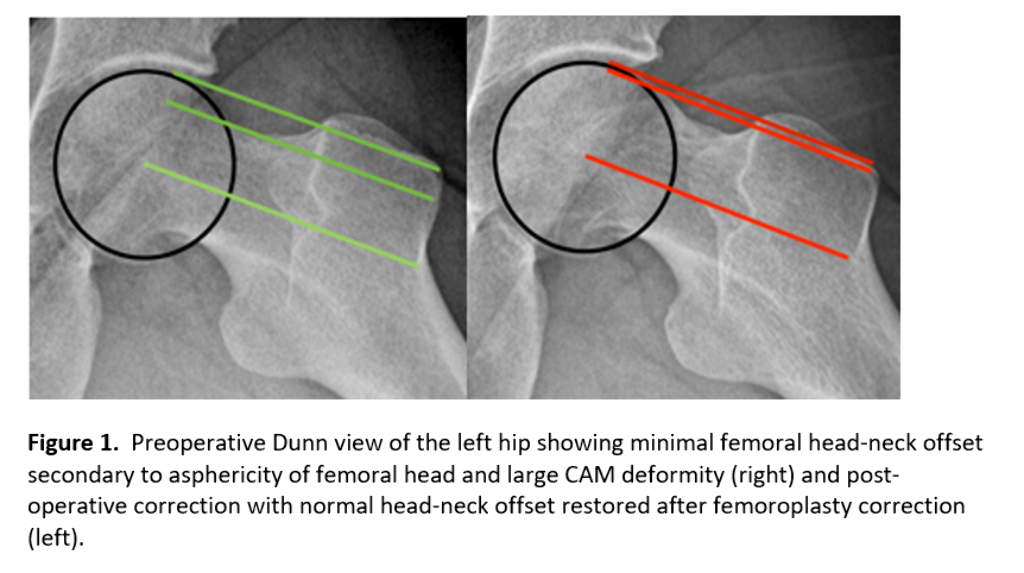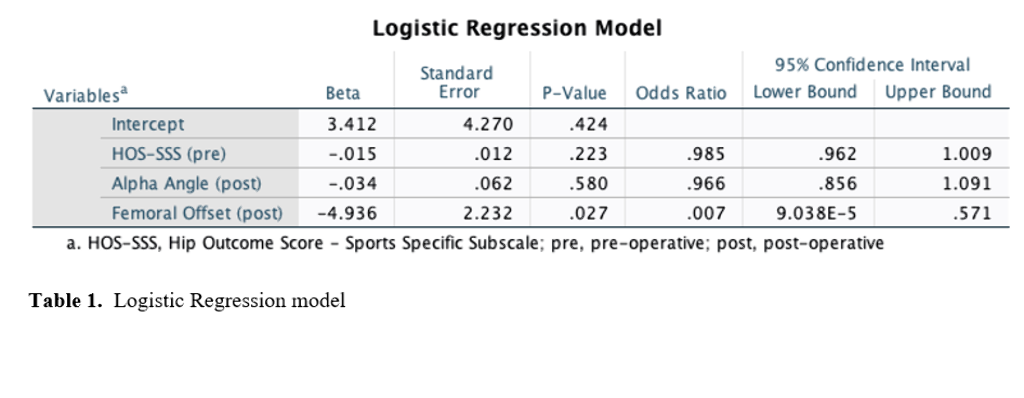P163 - Application of Deep Learning Models to Predict the Need for Revision Surgery in High-Level Athletes
- P. Padilla (Des Plaines, US)
- B. Domb (Des Plaines, US)
- A. Jimenez (Des Plaines, US)
- T. Harris (Des Plaines, US)
- M. Lee (Des Plaines, US)
- J. Owens (Des Plaines, US)
- D. Maldonado (Des Plaines, US)
- A. Lall (Des Plaines, US)
- P. Sabetian (Des Plaines, US)
- P. Padilla (Des Plaines, US)
Abstract
Purpose
To identify predictive factors for undergoing revision surgery in a cohort of high-level athletes undergoing primary hip arthroscopy for femoroacetabular impingement syndrome (FAIS).
Methods and Materials
Data were reviewed on all patients undergoing primary hip arthroscopy for femoroacetabular impingement syndrome (FAIS) between July 2008 and May 2019. Patients were included if they competed in professional, collegiate, and high school sports and had minimum 2-year follow-up for the Hip Outcome Score – Sport Specific Subscale (HOS-SSS). The primary outcome was undergoing arthroscopic revision surgery. Recursive feature selection was used to identify predictive variables from an initial pool of 27 features. A Multilayer Perceptron Artificial Neural Network (MLP-ANN), Extreme Gradient Boosting (XGBoost), and logistic regression models used to identify significant predictors.
Results
A total of 413 high-level athletes were included (36 professional, 151 college, 226 high-school) and 5.1% of athletes underwent revision arthroscopic surgery. A combination of 3 variables optimized model performance: post-operative femoral head-neck offset, pre-operative HOS-SSS score, and post-operative alpha angle. The XGBoost model demonstrated the best accuracy (R2 = 97.4%) All models identified postoperative femoral head-neck offset as the most important variable in predicting the need for revision surgery, and the logistic regression model found it to the only statistically significant variable (Odds Ratio: 0.007, P = 0.027). A cutoff value of 6.35 mm was established for femoral head-neck offset. Athletes below this threshold underwent revision surgery at a rate of 15.1% compared to 4.1% of athletes above the threshold (P = 0.004).


Conclusion
In a cohort of high-level athletes undergoing primary hip arthroscopy for FAIS, post-operative femoral offset was the most significant factor predicting revision hip arthroscopy with increased femoral offset resulting in a decreased likelihood of undergoing revision surgery.